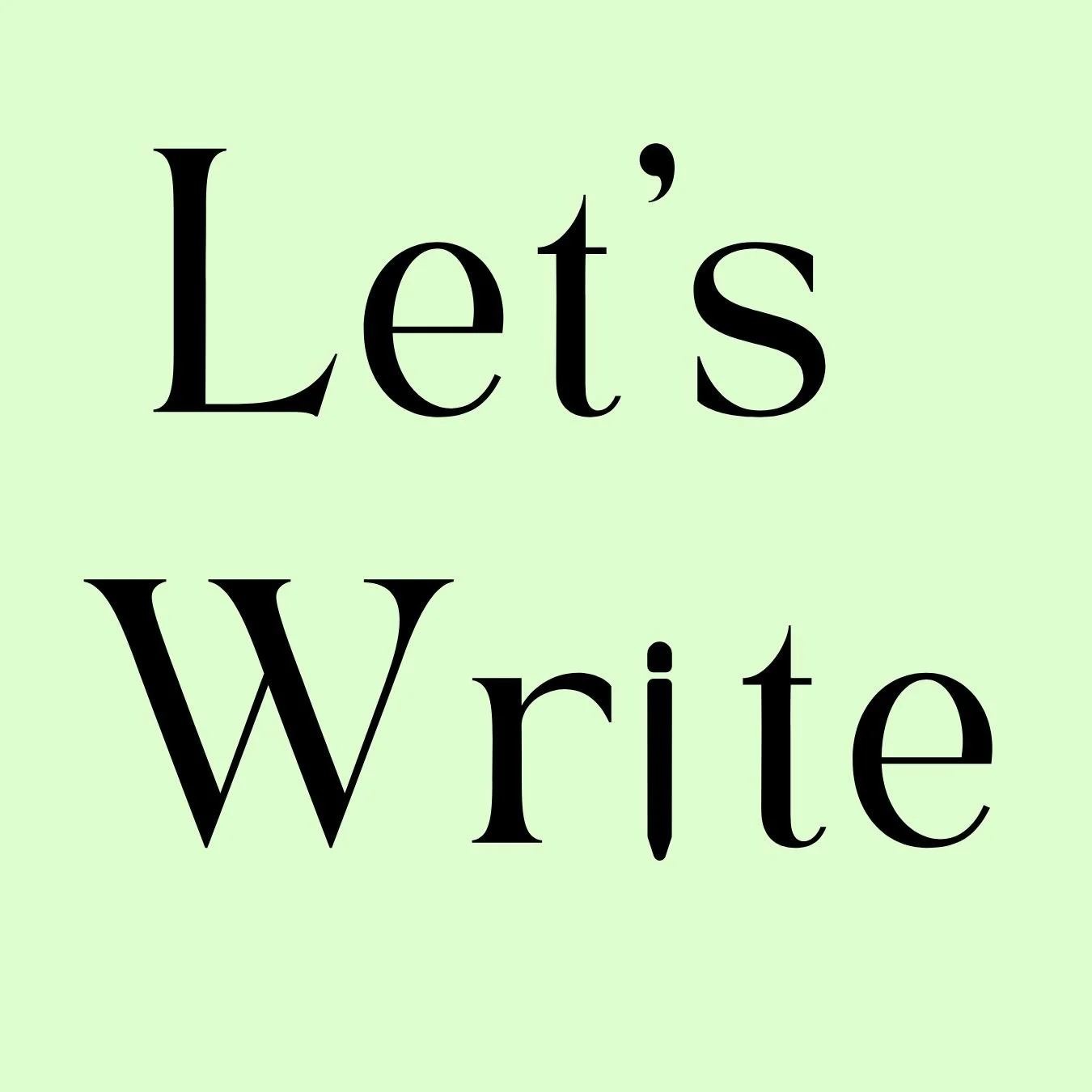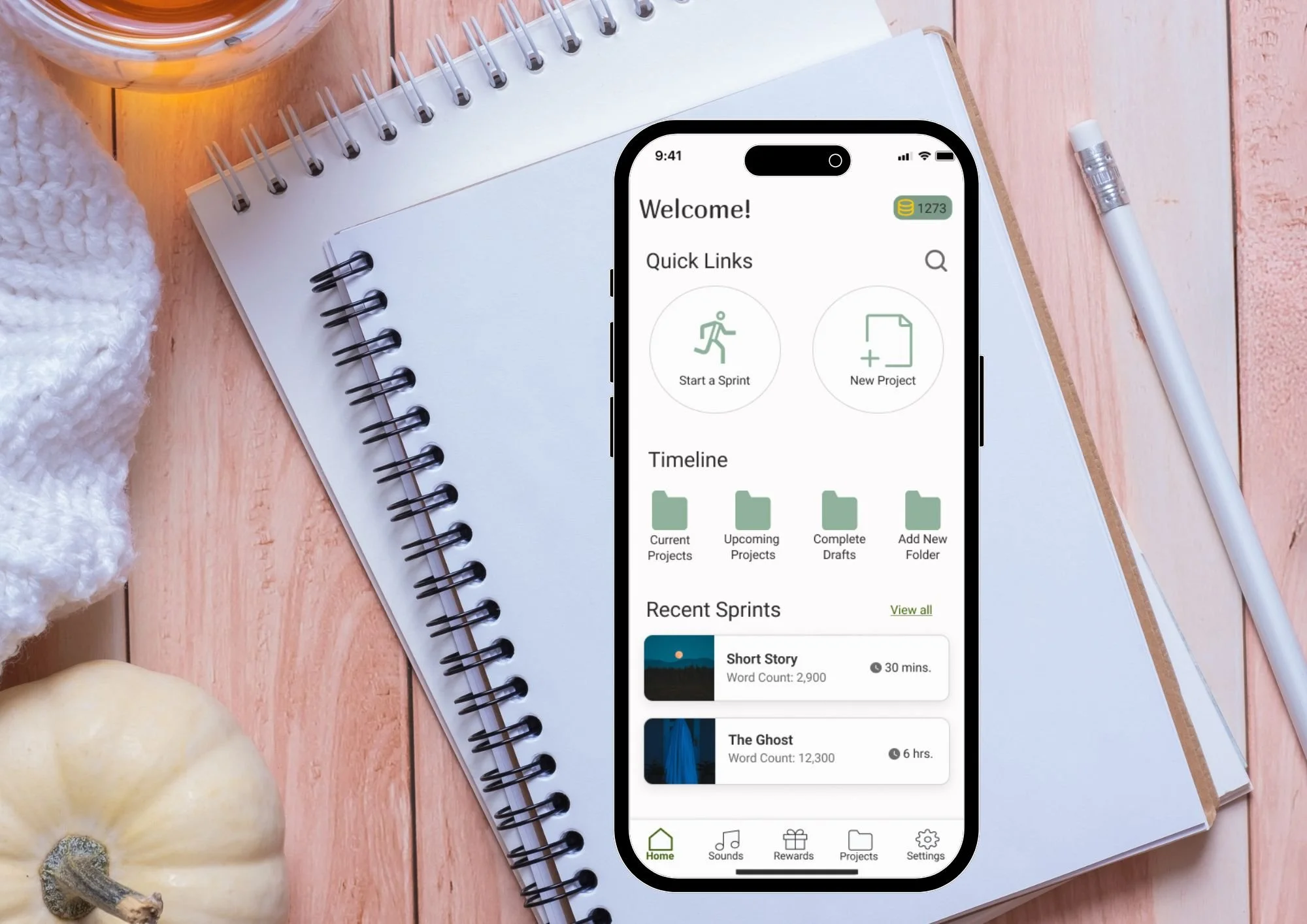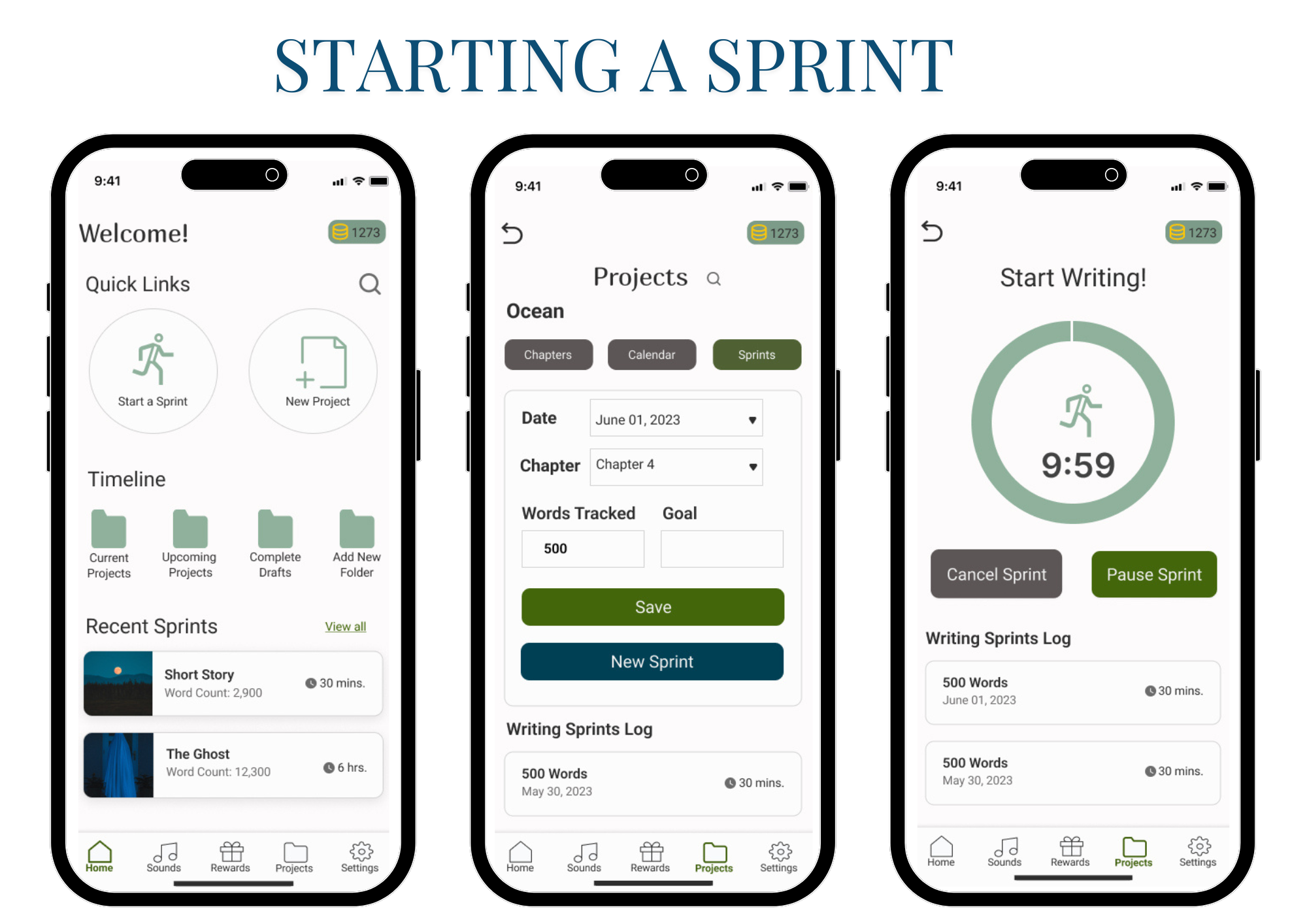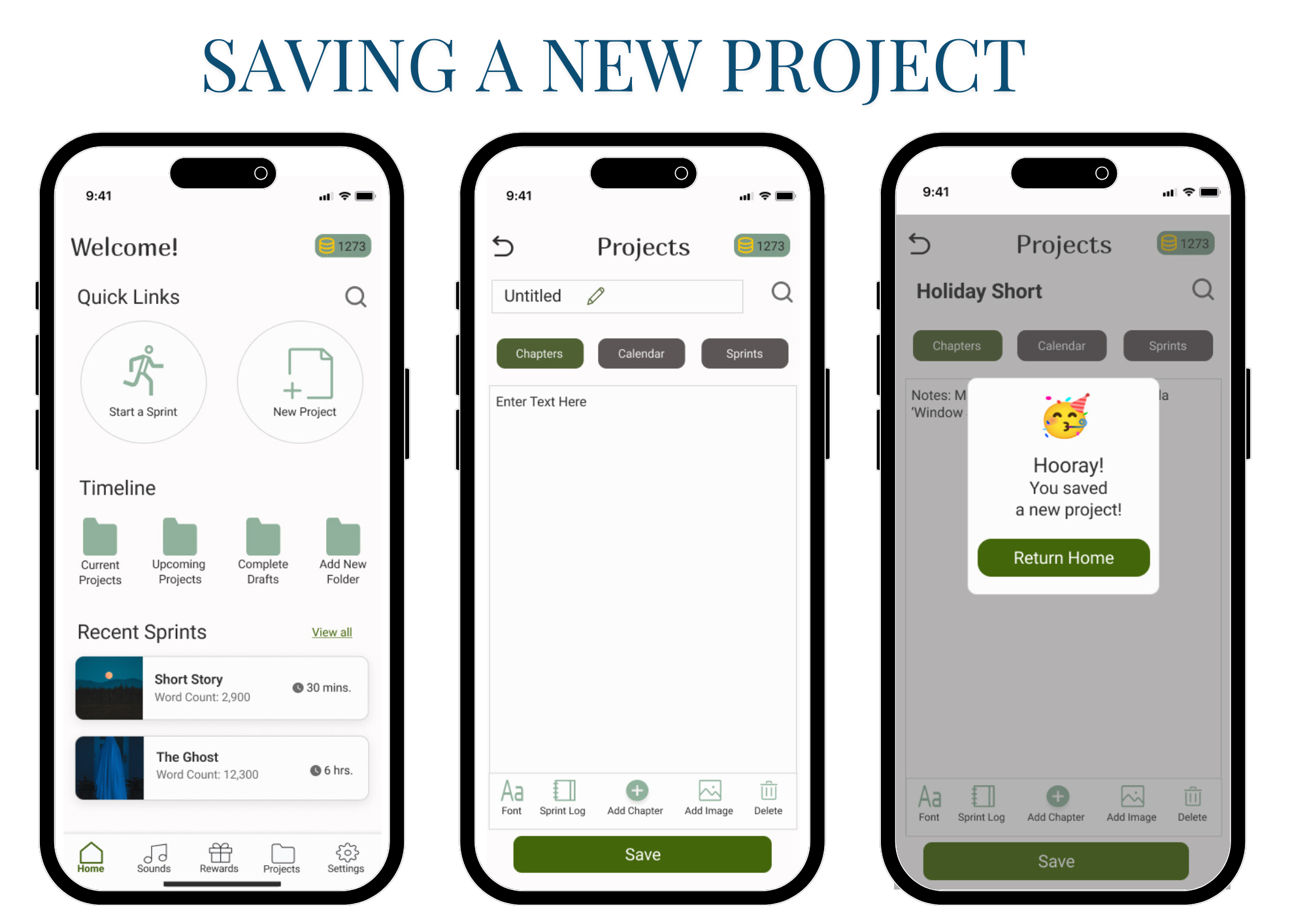Let’s Write
Let’s Write is a thoughtfully designed mobile app that caters to writers who need a seamless way to manage multiple projects. With four years of experience in product design, I focused on creating an intuitive user experience that simplifies the writing process. Stack used: Figma, Figjam, Calendly, Zoom. Project duration 6 months.
The Brand
The logo evokes the main use of the app —writing—. I named this app ‘Let’s Write’ to emphasize and motivate the user with a call to action. I also used a bright color for extra energetic feeling. I made the ‘i’ a pen to truly embrace what this app is for at a first glance.
Keeping in mind that users can be using this app to write as a hobby or business. I decided to make the app very easy to use and playful all while staying organized. I created folders to keep past, future and current projects easily accessible. I made the two main buttons and icons large enough and simple for quick access. The two buttons identify the main uses for this app to users. A user will be looking to either start a sprint for a current project or start a new project all together.
“I’m a writer and I want to track my sprints”
Concept
To gain insights into how writers manage multiple projects simultaneously, I began by conducting a screener survey. This survey was designed to pinpoint participants who actively write, especially those juggling more than one ongoing project. With five targeted questions, I explored how hobbyist writers organize and prioritize their work to ensure consistent progress. After identifying the right participants, I proceeded with in-depth interviews to delve deeper into their organizational strategies and challenges.
Data
I conducted the survey within writing groups on social media to assess how writers prioritize their projects and maintain consistent progress. A total of 31 writers participated in the five-question survey. The results revealed that writers who start more than three projects within a 12-month period are at a higher risk of not completing any of them. Conversely, those who take on fewer projects tend to complete them, while a small number of writers manage to complete more than five projects in a year by working diligently. From this pool, I selected five participants for in-depth interviews to gain further insights.
I conducted Zoom interviews with five writers who were actively working on multiple writing projects. During these interviews, I asked them to discuss:
Their writing space.
How they tracked their writing progress.
Any obstacles that interfered with their writing time.
The number of projects started.
The number of projects completed
Difficulties they encountered when returning to a project.
Writing Flow
Creating user flows for the three key actions within the app allowed me to visualize the user journey and pinpoint each step they would take. This process also helped me identify any potential gaps or missing steps, ensuring a smoother and more intuitive user experience.
Tracking words in a current writing project
Saving a new project
Running a writing sprint for a project
Ready. Set. Go.
"Helping writers stay organized on the go."
— Fatima Martinez-Rosales



